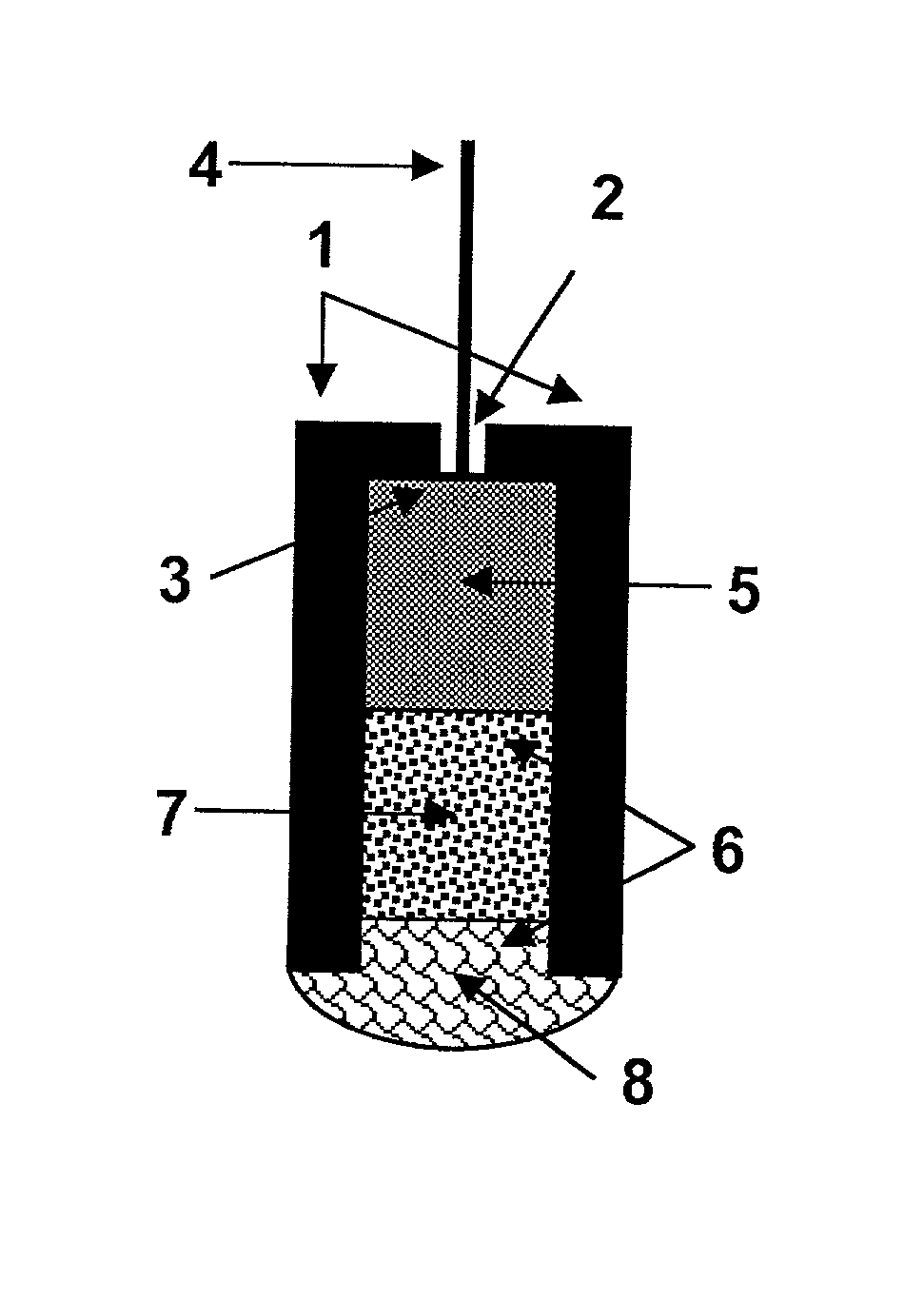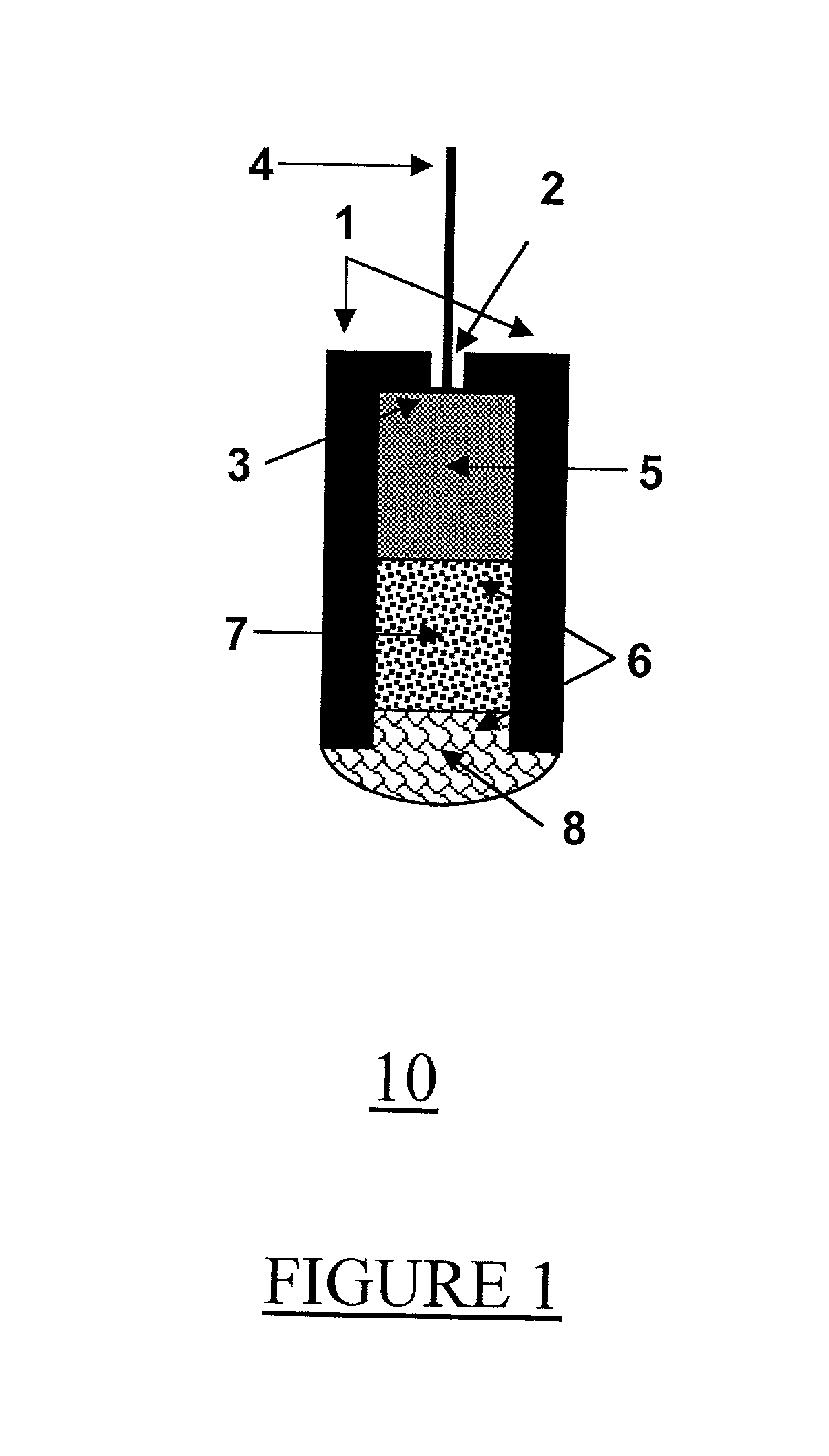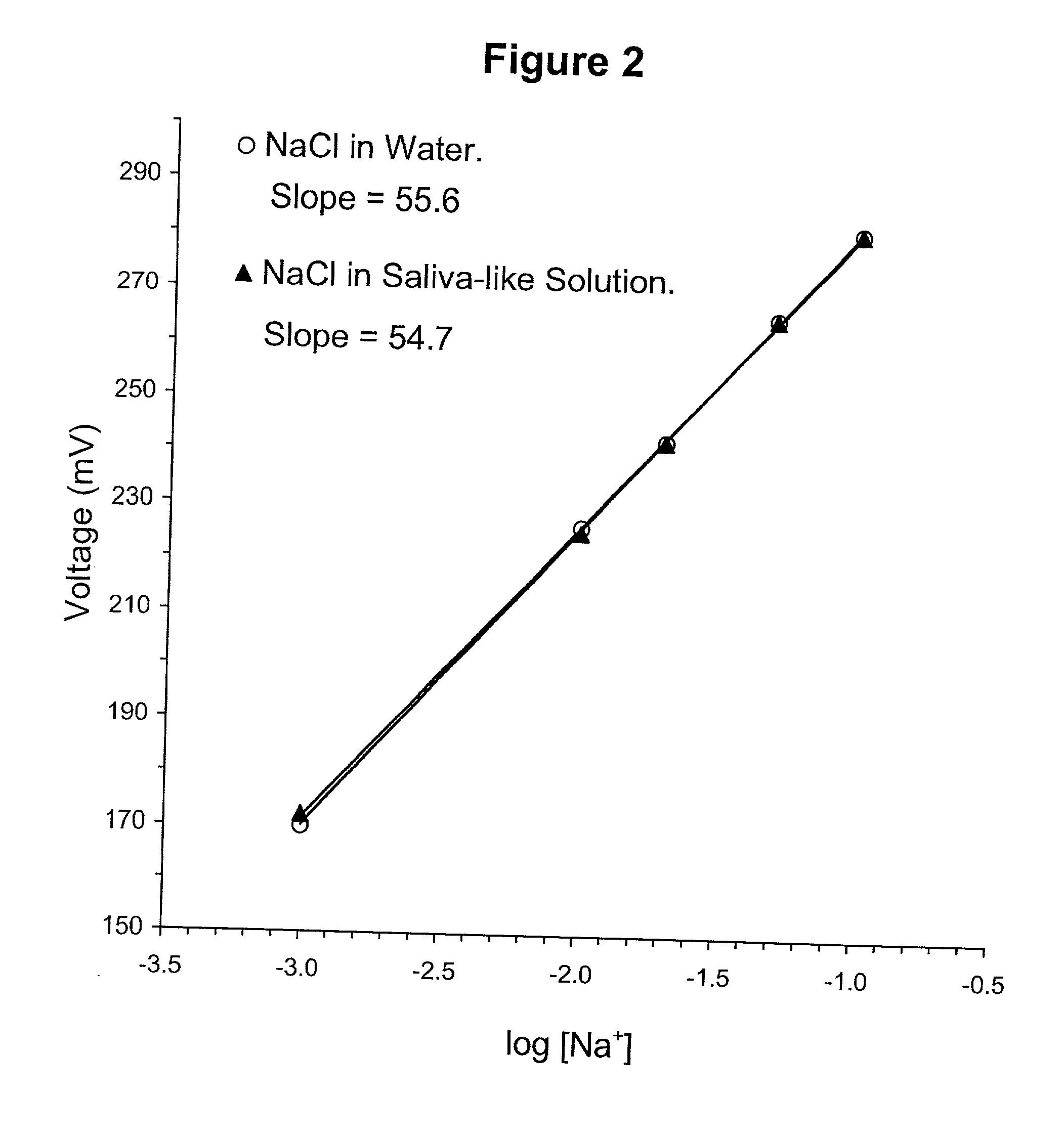Solid-state ion selective electrodes and methods of producing the same
a technology of solid-state ion selective electrodes and electrodes, which is applied in the direction of material analysis by electric/magnetic means, measurement devices, instruments, etc., can solve the problems of shortening the life of the electrode, affecting the performance of the electrode, and affecting the quality of the electrode,
- Summary
- Abstract
- Description
- Claims
- Application Information
AI Technical Summary
Problems solved by technology
Method used
Image
Examples
example 1
Preparation of Electrodes
[0067] Electrode 10 was constructed of polyethylene tube 1, with a 3 mm internal diameter and 7 mm length. Tube 1 was open from one side and closed from the other side, except for a central small hole 2 (1 mm diameter). Stripped end 3 of a shielded electric wire 4 was inserted into hole 2. Reference element 5 was a cylindrical rod of compressed graphite, with 3 mm diameter and 4 mm length. Reference element 5 was mounted tightly in polyethylene tube 1, so electric contact was formed with stripped end 3 of wire 4. This formed cylindrical space 6 inside tube 1 which constitutes the electrode body. Within space 6, solid contact 7 (2 mm thickness) and selective membrane 8 (1.5 mm thickness) were produced using method 20 and the materials listed below, to complete the electrode structure. ISE 10 was connected by means of shielded wire 4 to a commercially available voltmeter. Potentiometric measurements were done versus a standard reference electrode (Ag / AgCl), wh...
example 2
Calibration Curves and Sensitivity
[0073] Representative calibration curves for Na.sup.+, Li.sup.+and K.sup.+ electrodes are presented in FIGS. 2, 3 and 8, respectively. ISEs according to the present invention demonstrate remarkable linearity in the tested concentration ranges. A sodium electrode according to the present invention was tested in the 1-100 mEq / L Na.sup.+ range (FIG. 2). A lithium electrode according to the present invention was tested in the 0.5-10 mEq / L Li.sup.+ (FIG. 3). A potassium electrode according to the present invention was tested in the 0.1-100 mEq / L K.sup.+ (FIG. 8). For each tested electrode, the results indicate that the linear range includes the concentrations of interest for clinically relevant applications. For example, the serum Li.sup.+ level of lithium treated patients and the physiological concentrations of Na.sup.+ and K.sup.+ are included in the linear ranges of the tested electrodes.
[0074] Slopes of 55.6, 56.8 and 53.8 mV / decade were recorded for...
example 3
Selectivity
[0075] The selectivity of electrodes according to the present invention is demonstrated in FIGS. 2, 3 and 4. In FIGS. 2 and 3 calibration curves for Na.sup.+ and Li.sup.+, respectively, were almost identical in water and in artificial saliva solution. The artificial saliva solution contained 18 mEq / L KCl, 2.9 mEq / L CaCl.sub.2, 0.6 mEq / L MgCl.sub.2. In the case of the Li.sup.+ measurements, 10 mEq / L of NaCl was further included in the artificial saliva solution. The results indicate that the tested electrodes are selective sensors, which can be used in physiological media including, but not limited to saliva.
[0076] The selectivity of the K.sup.+ electrode is depicted in FIG. 4. Gradual addition of NaCl, up to 200 mEq / L, caused voltage changes of less than 5 mV, in the measurement of 1 and 10 mEq / L KCl. This result indicates high K.sup.+: Na.sup.+ selectivity. The demonstrated sensitivity is satisfactory for the detection of potassium in blood and other physiologic solution...
PUM
| Property | Measurement | Unit |
|---|---|---|
| temperature | aaaaa | aaaaa |
| temperatures | aaaaa | aaaaa |
| temperature | aaaaa | aaaaa |
Abstract
Description
Claims
Application Information
 Login to View More
Login to View More - R&D
- Intellectual Property
- Life Sciences
- Materials
- Tech Scout
- Unparalleled Data Quality
- Higher Quality Content
- 60% Fewer Hallucinations
Browse by: Latest US Patents, China's latest patents, Technical Efficacy Thesaurus, Application Domain, Technology Topic, Popular Technical Reports.
© 2025 PatSnap. All rights reserved.Legal|Privacy policy|Modern Slavery Act Transparency Statement|Sitemap|About US| Contact US: help@patsnap.com



